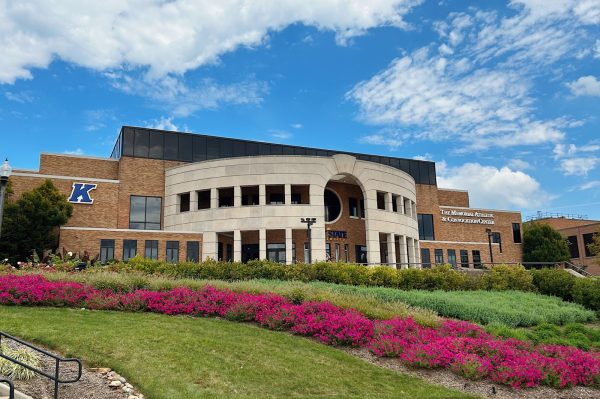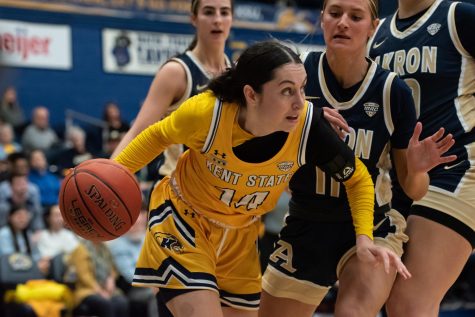Enrollment up across the board as job seekers look for their competitive edge
March 17, 2009
The economy hasn’t stopped people from going to college. Enrollment is up 2.7 percent over last fall at public colleges, regional campuses and community colleges, according to the Ohio Board of Regents.
“Historically the country has seen in times of recession education spikes up,” said Steve Vitatoe, John Carroll University’s director of enrollment operations.
Stephanie Rich, admissions specialist at the Kent State Ashtabula campus, said the economy has made people feel that they need a degree in order to market themselves and remain competitive with other job-seekers.
The economy has also prompted students to change their plans.
It has been a national trend that a lot of students have been migrating from higher priced institutions to public colleges and public institutions to regional campuses, said Pete Goldsmith, vice president for enrollment management and student affairs.
| AID TO PRIVATE COLLEGES IN LIMBO
• Governor Strickland’s budget proposal would cut about $37.3 million in aid to private colleges by eliminating programs such as Ohio Student Choice Grant and two other scholarships for private college students. • The governor’s proposal includes a 30 percent increase in student aid at public colleges and 3 percent increase at private institutions. • State aid to public colleges has spiked 285 percent over the past 12 years, while aid to private colleges has risen 62 percent. Source: The Chronicle of Higher Education |
Students like senior Spanish major Nicole Gonzalez, who came from New York University to Kent State, are making the move.
Enrollment up at public, regional and community colleges
Kent State saw a 7.4 percent increase in enrollment this spring over last spring and is not the only public college that is seeing this.
Wright State University exhibited a 2 percent increase in enrollment for the winter quarter, Cathy Davis, director of undergraduate admissions, said.
This trend is consistent with regional campuses and community colleges.
According to the Ohio Board of Regents, regional campus enrollment is up 4.6 percent in Ohio and community colleges exhibited a 3 percent increase.
Kent State’s Ashtabula campus is ahead of the curve, exhibiting a 30 percent increase. Although all eight campuses saw an increase, this increase was almost double that of other campuses.
She said the low cost and absence of a waiting list are attractive reasons why students would want to choose a regional campus. The tuition for a full-time undergraduate student at Ashtabula is $2,385, compared to $4,215 at the Kent campus.
What about private colleges?
Private colleges have seen varied enrollments as a result of the economy, and some students are transferring from expensive private institutions to public colleges.
Gonzalez transferred to Kent State because of the economy.
“I transferred to save money,” she said, adding that the tuition and fees at NYU can run around $50,000 a year. Also, she noted that the cost of living in New York City was high.
At John Carroll University, enrollment is up a bit, but not much, Vitatoe said. Still the fall-to-spring retention this year was the highest ever.
He said applications are at the same point as last year, but he doesn’t know what will happen with the economy.
“Private schools have always been in the situation where they are fighting the cost factor,” Vitatoe said.
Some private colleges are doing well despite the movement. At Notre Dame College outside Cleveland, this spring had the biggest number of full-time undergraduate students, said Dave Armstrong, vice president of enrollment.
The admissions office worked harder because of the economy, but he said Notre Dame has managed this increase because they are a small school of 1,600 students, and it is easier to increase a smaller number.
The applications are 35 percent up at Notre Dame over last year, he said.
Uncertainty for the fall
“The big kicker in all this is the economy,” Goldsmith said.
He said that bad economic times bring forth a lot of uncertainty for admissions in the fall. People will have to decide how confident they are and whether college is the right choice.
“This is going to be a different year for everybody,” Davis said.
Because of the economy, she said she is not sure of fall admissions, but hopes for a slight increase. Applications at Wright State are running ahead by 3 percent.
Armstrong said people have to note that there are fewer students graduating high school in Ohio, and the population of the Midwest is decreasing.
“It’s tough times,” Vitatoe said. “Every school -ÿwhether public or private – is affected.”
He said his university will have to wait and see.
“You have to do everything you can to make it through,” he said.
Contact student affairs reporter Kelly Petryszyn at [email protected].
















